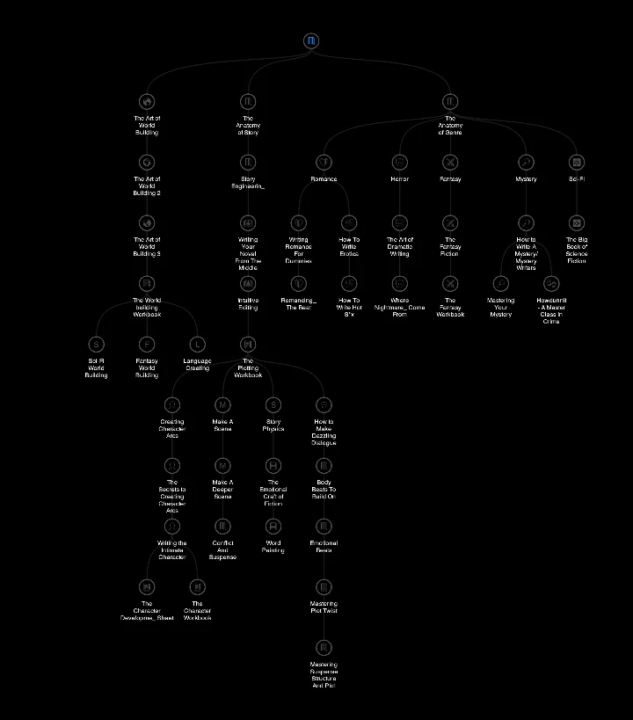
Write something
Upload schedule
This is what i'm going to upload for the next few months or so you guys can pick which one you want to see next. General Copywriting Tips 1. “5 Copywriting Tips You Need Today to Boost Sales Instantly” 2. “Are You Making This #1 Copywriting Mistake? Here’s the Fix” 3. “Write Copy That Sells (Without Feeling Like a Pushy Salesperson)” 4. “The Real Reason Headlines Fail (And 3 Secrets to Winning Every Time)” 5. “Steal My Proven Email Formula That Skyrockets Open Rates” 6. “Why Simple Copy Always Wins (And Fancy Words Kill Sales)” 7. “Turn Any Feature Into an Irresistible Benefit (Step-by-Step Examples)” 8. “5 Copywriting Formulas That Work in Every Niche (And Why They’re So Powerful)” 9. “3 Copywriting Hacks You Can Use Right Now to Double Your Conversions” 10. “Write Perfect Calls-to-Action That Demand Clicks and Drive Sales” Audience Research & Empathy 11. “How to Understand Your Audience in 3 Simple Steps” 12. “Where to Find Your Audience's Biggest Pain Points” 13. “The Importance of Empathy in Copywriting” 14. “Why You Should Spend 80% of Your Time Researching (Not Writing)” 15. “How to Write Like You’re Speaking to ONE Person” 16. “3 Questions to Ask Before You Start Writing Copy” 17. “How to Use Customer Reviews for Better Copy” 18. “Why Copy That Resonates Outperforms Copy That Rhymes” 19. “How to Nail Your Audience's Language Without Guessing” 20. “The Key to Writing Copy That Makes People Say, ‘That’s Me!’” Headline Writing 21. “Why Headlines Matter More Than You Think” 22. “The Ultimate Guide to Writing Attention-Grabbing Headlines” 23. “10 Fill-in-the-Blank Headline Templates You Can Steal” 24. “How to Write Headlines That Stop the Scroll” 25. “The Anatomy of a Perfect Headline” 26. “Headline Myths That Are Costing You Sales” 27. “Quick Tricks to Make Headlines More Click-Worthy” 28. “How to Add Emotion to Your Headlines” 29. “Why Curiosity-Driven Headlines Work” 30. “Real-Life Examples of Headlines That Sell” Email Copywriting 31. “How to Write Email Subject Lines That Get Opened” 32. “Why Personalization Is Key in Email Copywriting” 33. “5 Types of Emails That Drive Conversions” 34. “How to Write the Perfect Welcome Email” 35. “Why Storytelling in Emails Boosts Engagement” 36. “3 Mistakes Killing Your Email Open Rates” 37. “How to Craft Irresistible Email CTAs” 38. “The Power of P.S. in Email Marketing” 39. “How to Structure Your Emails for Maximum Impact” 40. “What to Write When You Don’t Know What to Say in an Email”

✍️ Writing Tip of the Day:
Staring at a blank page? Here’s the secret: write your worst idea first. Why? It’s easier to edit bad writing than perfect nothing. 📝 What’s your go-to trick for beating writer’s block? Share it below! Let’s help each other keep those words flowing. 🌟
0
0
A Comprehensive Guide to Creating a Buyer Persona
Step 1: Conduct Research Before you start creating buyer personas, it’s important to gather as much information as possible. Start by collecting both qualitative and quantitative data to help shape your understanding of your target audience. You can gather data from several sources: - Customer Interviews: Direct conversations with customers are one of the best ways to get to know your audience. Ask open-ended questions about their challenges, goals, and decision-making process. - Surveys and Polls: Conduct surveys using tools like SurveyMonkey or Google Forms to gather data on specific behaviors, preferences, and demographics. - Website Analytics: Tools like Google Analytics can provide valuable insights about your website visitors, such as their demographics, interests, and browsing habits. - Social Media Insights: Social platforms like Facebook, Instagram, and LinkedIn offer analytics that reveal your audience’s age, location, and interests. - Sales and Support Teams: Talk to your sales and customer support teams, as they interact directly with customers. They can offer insights into common customer queries, concerns, and feedback. By collecting this data, you can gain a clear understanding of who your customers are, what they care about, and how they behave. This will form the foundation for your persona development. Step 2: Identify Key Demographic Information The next step is to define the basic demographic information for your buyer persona. This will help you understand the broad characteristics of your target audience. Common demographic factors include: 1. Age: Knowing the age range of your ideal customer can help determine the language, tone, and content that will resonate with them. For example, a 25-year-old customer might respond to different messaging than a 45-year-old customer. 2. Gender: Gender can influence buying preferences, as well as the type of products or services you offer. However, be cautious not to assume too much about gender-specific preferences. 3. Income Level: Knowing the income bracket of your target persona allows you to price your product appropriately. For example, a luxury product may appeal to high-income individuals, while budget products may appeal to lower-income individuals. 4. Education Level: This can impact how you communicate and how you position your product in the marketplace. Higher education levels may mean your audience is more likely to appreciate detailed, research-backed content. 5. Location: Your persona’s location can be key to deciding which marketing channels and platforms are most effective. Are they in a big city or a rural area? Do they shop online or prefer in-store experiences? 6. Family and Household: Understanding family dynamics and whether they have children, for example, will affect how you market to them.
0
0
1-4 of 4

skool.com/writers-academy-7150
Join us to share tips and ideas on writing, storytelling, and content creation. Let's grow and inspire together!
Powered by
